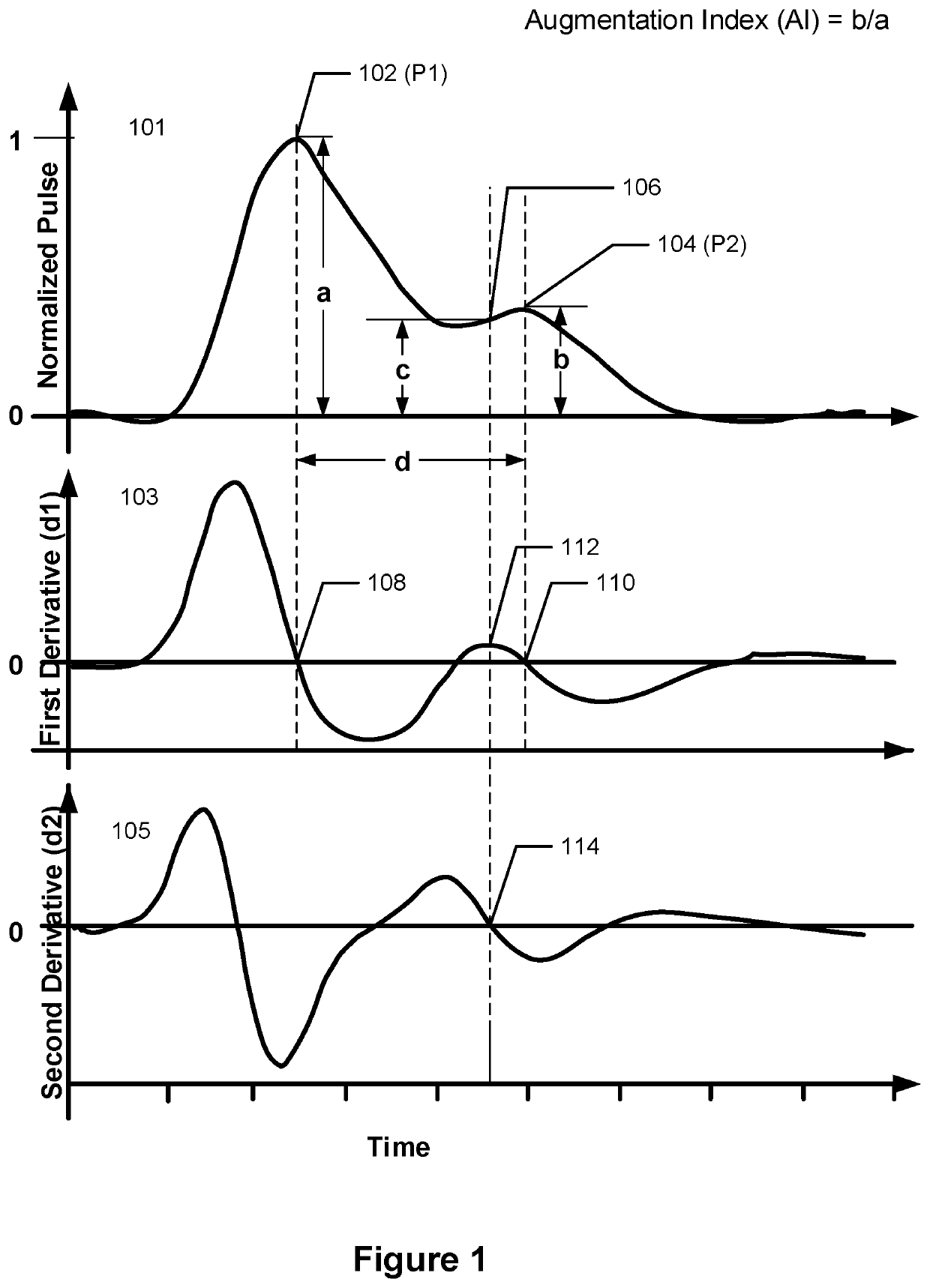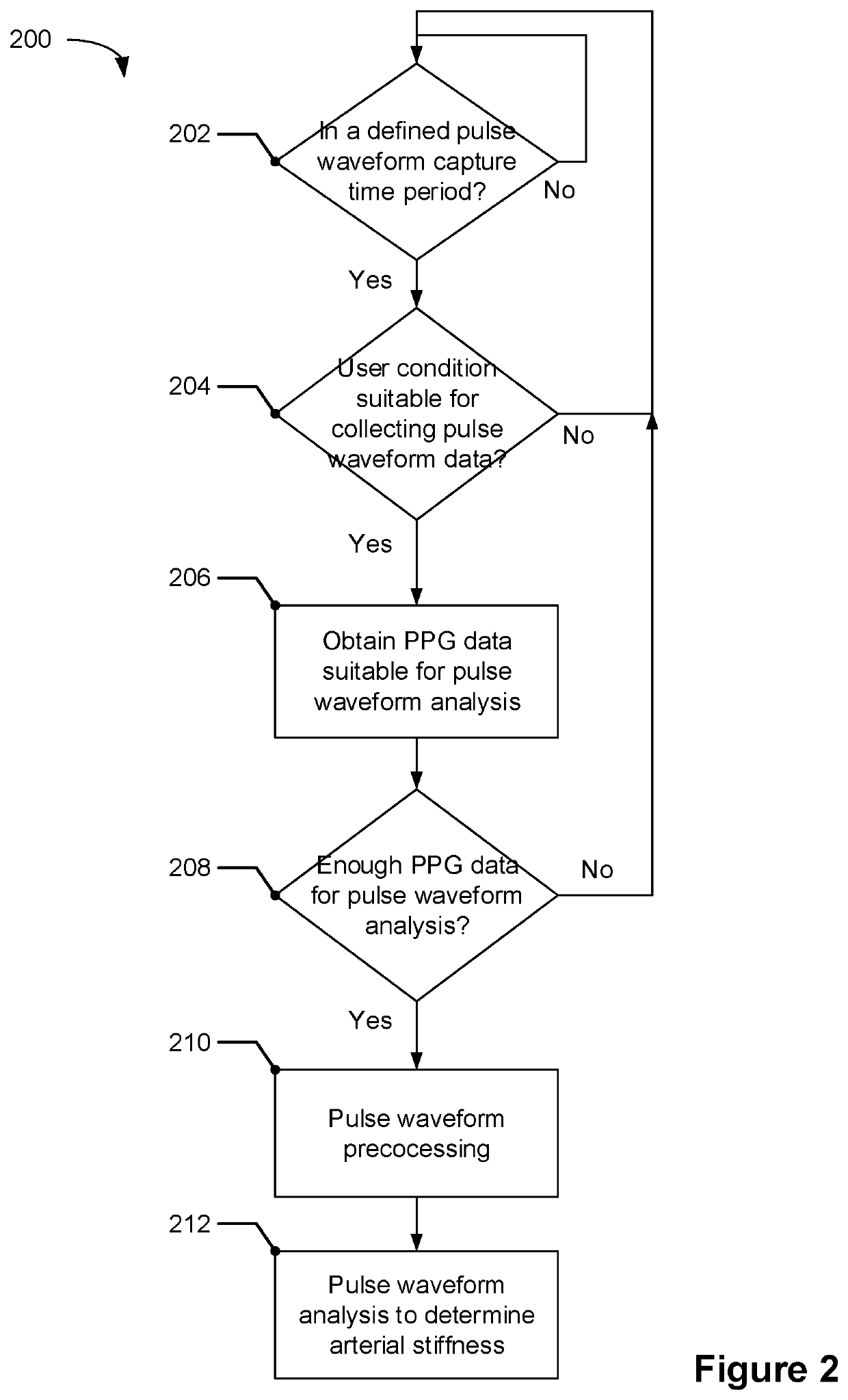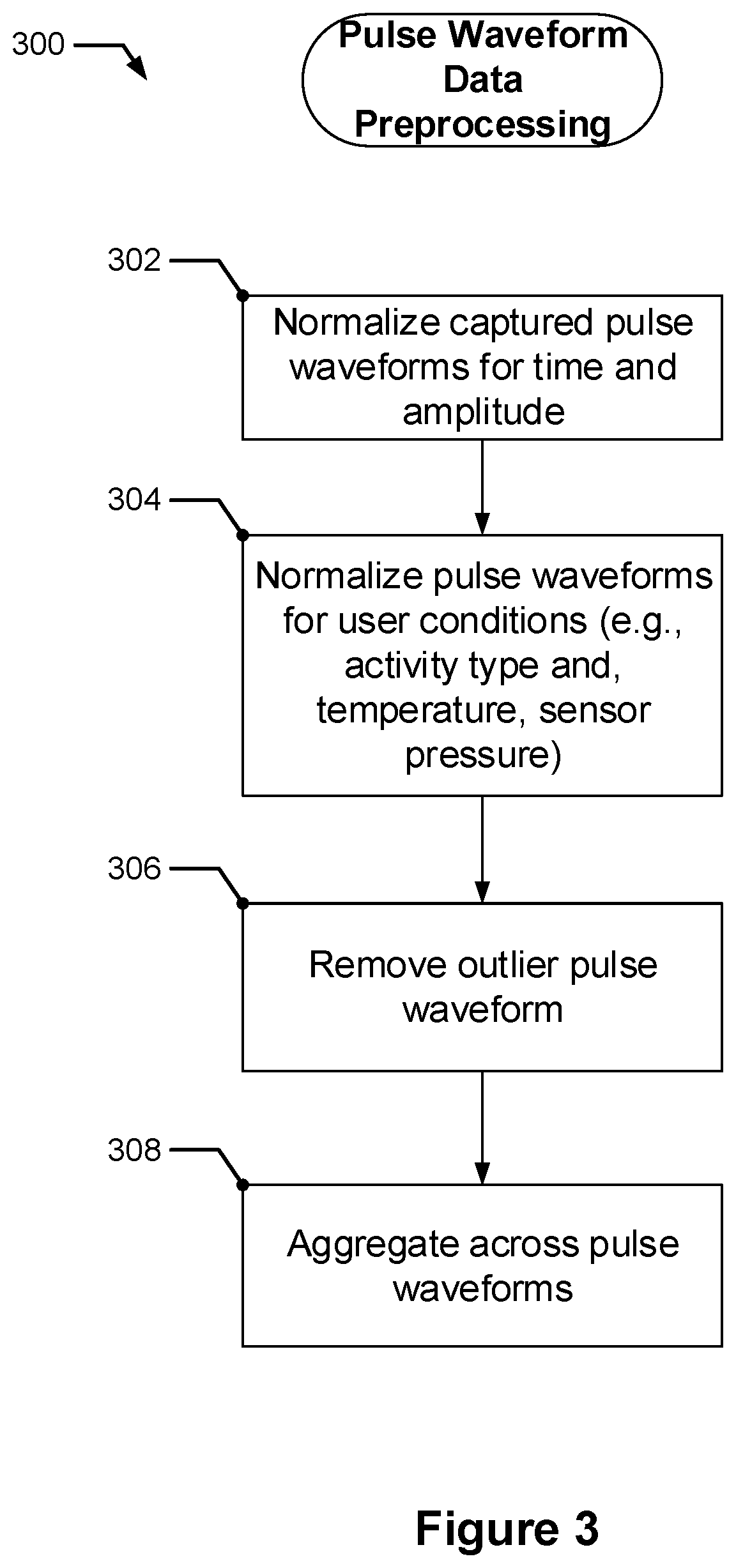Photoplethysmography-based pulse wave analysis using a wearable device
a technology of pulse wave analysis and photoplethysmography, which is applied in the field of photoplethysmograhy, can solve the problems of more pronounced reflection wave, limited capacity, and difficulty of the doctor's office, and achieve the effect of removing ppg data variance and conserving the power of the wearable biometric monitoring devi
- Summary
- Abstract
- Description
- Claims
- Application Information
AI Technical Summary
Benefits of technology
Problems solved by technology
Method used
Image
Examples
Embodiment Construction
[0092]Various morphological features of the pulse waveforms are correlated with arterial structures and functions including arterial stiffness. Morphological features of a pulse waveform as used herein include various aspects of the shape of the waveform and information derived therefrom including the slopes of various portions of the waveform, time separation between such portions, amplitudes of such portions, and the like. Morphological features of the pulse waveform also include various aspects of the shape of the derivatives of the waveform including a first derivative, a second derivative, and higher order derivatives. Unless otherwise qualified, any one or more of these features may be used in the analyses described herein.
[0093]In some context not specific to the disclosure herein, the term pulse waveform can be interpreted as closely related to the shape of a PPG graph reflecting blood volume change caused by pulsed blood flow, while the term pulse wave may be interpreted as...
PUM
 Login to View More
Login to View More Abstract
Description
Claims
Application Information
 Login to View More
Login to View More - R&D
- Intellectual Property
- Life Sciences
- Materials
- Tech Scout
- Unparalleled Data Quality
- Higher Quality Content
- 60% Fewer Hallucinations
Browse by: Latest US Patents, China's latest patents, Technical Efficacy Thesaurus, Application Domain, Technology Topic, Popular Technical Reports.
© 2025 PatSnap. All rights reserved.Legal|Privacy policy|Modern Slavery Act Transparency Statement|Sitemap|About US| Contact US: help@patsnap.com



